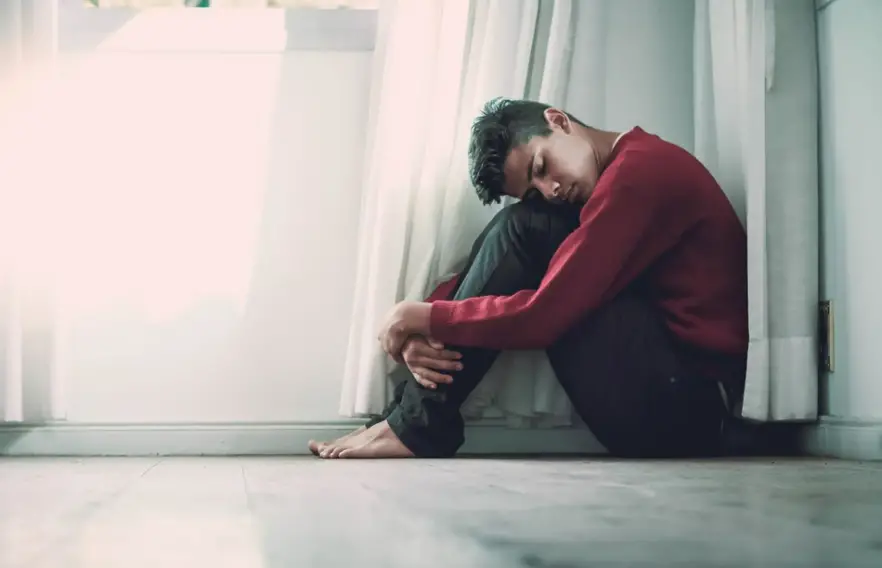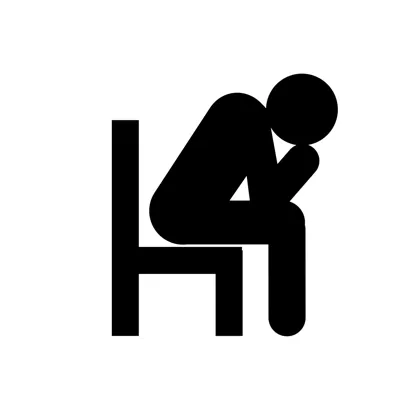Depression is a serious illness which often has a profound impact on the life of an individual who suffers from the illness. Depression is normally termed as a feeling of persistent sadness and general low mood – present for at least a few weeks.
While Clinical Depression is the most common form of depression, there are several sub-types, as seen in this article, which provides a general overview of the different types of depression.
Knowing the exact type of depression which is present isn’t essential, but it is recommended to know what the sub-type is – this should ensure you get the appropriate treatment.
While Clinical depression is the most common type, often a sub-type is more applicable. The causes of the different types of depression aren’t always clear, with a range of factors thought to play a role.

What is Depression?
Depression: Depression is a serious illness which can have a profound impact on the day-to-day life of someone who suffers from the illness. While the majority of people go through periods of feeling down or unhappy, those who are depressed feel persistently sad or have a low mood for weeks, or perhaps even months. Depression can make life appear pointless, and often leads to suicidal ideation. Depression is a common mental illness, and is usually classed as either mild, moderate or severe. Clinical Depression is the most common form, though there are a range of types, including Postpartum depression and Seasonal Affective depression. The good news is that unlike many mental health conditions, with the right treatment, support and lifestyle, many people with depression will gain full remission.
What are the different types of Depression?
Clinical Depression (Also Known as Major Depressive Disorder): This is the most common form of Depression. This is where an individual will feel depressed for the majority of a day, for at least a few consecutive weeks. Typical symptoms include the loss of interest and pleasure in normally enjoyable activities, sleep problems, tiredness, and sometimes suicidal ideation.
Dysthymia (Also Known as Persistent Depressive Disorder): If a patient’s feelings of depression lasts for 2 years or longer, it is referred to as Dysthymia, or Persistent Depressive Disorder. The symptoms of Dysthymia are the same as Clinical depression – but the difference lies in how a Dysthymia sufferer will have persistent depression – while someone with Clinical depression will often have bouts of regular mood between depressive episodes. People with Dysthymia will often suggest they have never been happy, and that they cannot remember a time where they haven’t been depressed.
Atypical Depression: Atypical Depression involves an individual suffering from persistent feelings of depression for long periods of time. However, a positive event taking place will lead to a temporary improvement in mood for the individual. While someone suffering from other forms of Depression typically will find little enjoyment in formerly enjoyable activities, someone who has Atypical Depression will find temporary happiness from positive event. Other symptoms include an increased appetite, being oversensitive to criticism, and the need to sleep longer.
Seasonal Affective Disorder: Seasonal Affective Disorder is another form of depression, although this disorder usually takes place during the winter months. Unlike other forms of depression, this disorder is limited to lasting the winter months, with shorter days and less sunlight leading to depressed moods for some individuals. By the time winter has gone, the disorder normally goes away, with Spring and Summer resulting in a reduction in symptoms.
Psychotic Depression: Psychotic depression can be a very difficult illness to live with, as it involves all of the symptoms of Clinical depression, along with some symptoms of psychosis. The most common forms of psychosis that would accompany depressive symptoms include hallucinations, delusions or paranoia. This disorder has many similarities with Schizophrenia, though someone suffering from Psychotic depression will typically know their psychotic episodes are not real – while those with Schizophrenia are steadfast in their belief that their symptoms are true.
Postpartum Depression (Also Known as Peripartum Depression or Postnatal Depression): Unlike the majority of other types of Depression, there is a clear cause of Postpartum depression. Women who have given birth, only to develop depressive symptoms in the subsequent weeks, will normally be diagnosed with Postpartum Depression. Equally, men can also suffer from Postpartum Depression. The symptoms in both cases are the same as Clinical Depression, only this illness can only come after the birth of a child – usually within a year of birth.
Treatment Resistant Depression (Also Known as Refractory Depression): This form of Depression is only diagnosed once treatments to relieve symptoms of depression have failed to yield a suitable response. Depression is treatable, though sometimes regular treatments don’t work. For someone to be diagnosed with this form of depression, they typically will have tried at least two talking therapies, and at least three medications from a minimum of two classes of antidepressants.
Premenstrual Dysphoric Depression (PMDD): This type of Depression involves women who have symptoms of depression at the start of their period. The regular depressive symptoms will normally be accompanied by fatigue, irritability and mood swings. These symptoms however will generally disappear within a few days. However, they will return at the start of the next month, and so the cycle goes on. This can be an ongoing cycle which can last for a considerable length of time, and typically causes functional impairment in many different contexts.
Summary
So while there are many different types of Depression, they share several similarities. While it can be helpful to know the exact type of depression a patient suffers from, the most important part is how a person recovers.
Treatment options are available. Getting to a more healthy mental position is certainly possible, and should always be the aim!
See Also
- Depression: Everything You Need to Know
- What Are The Different Types of Depression?
- What Are The Symptoms of Depression?
- What Are The Causes of Depression?
- How is Depression Diagnosed?
- How Can Depression be Treated?
- What is the Prognosis for Depression?
- 10 Tips for Living With Depression
Disclaimer
This website should be used purely for informational purposes, and does not intend to, nor should it ever, be used as a replacement for professional medical advice.
We strive to keep all of our pages updated, and ensure that our website is full of factual and in-depth information. However, we encourage you to browse this website with care.
As a reminder, this website and all content within it cannot and should not replace the advice of a trained medical professional. You can read our full disclaimer at this link.
Helplines
If you are struggling with your mental health, help is available. With the right support and treatment, you can make a recovery. For information on helplines, or if you are in a state of crisis, please visit our crisis page by clicking on the relevant link for your geographical location (United Kingdom), (United States), (International). You can also see how to get mental health treatment and the process involved by clicking this link.



































